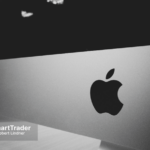📆 Friday, February 14
► European markets are slightly up, trading at all time highs. The Stoxx 600 (+0.1%) edged higher, as luxury stocks rallied, with Hermès (+4.2%) leading the gains after reporting an 18% rise in Q4 sales, reinforcing strong demand for premium goods. The UK’s FTSE 100 (-0.2%) slipped, while France’s CAC 40 (+0.5%) outperformed, supported by strong corporate earnings / gains in luxury. Germany’s DAX trades flat, as wholesale prices rose (+0.9% Y/Y), adding to inflation concerns in the region. The EUR hovered near a two-week high, reflecting investor optimism over potential Ukraine peace talks.
► US markets remained steady, consolidating Thursday’s rally, which was driven by Trump’s softer stance on tariffs and optimism around peace talks in Ukraine. S&P 500, Nasdaq and Dow Jones futures showed limited movement as traders awaited US retail sales data for further clues on consumer strength. However, concerns lingered after yesterday's hotter-than-expected Producer Price Index (PPI) data, which signaled that inflationary pressures remain elevated, potentially delaying any Federal Reserve rate cuts. Investors are also closely monitoring Trump’s upcoming tariff decisions, particularly regarding Japan and South Korea, which could have ripple effects on global trade.
► Asian markets posted mixed results, with Chinese stocks extending their AI-driven rally, while Japan underperformed. Hong Kong’s Hang Seng Index (+3.69%) surged as Chinese tech stocks soared, fueled by optimism around DeepSeek’s AI breakthrough and Apple’s plans to introduce AI features in China. Ernie Bot, the Beijing-based company’s AI chatbot (from Baidu) with premium features like AI painting, will be available to both mobile and desktop users at no cost starting from April 1. The Shanghai Composite (+0.43%) and Shenzhen Component (+1.16%) rebounded as the People’s Bank of China (PBOC) pledged continued stimulus, reinforcing expectations of loose monetary policy to support economic growth. Meanwhile, Japan’s Nikkei (-0.79%) declined as the JPY strengthened sharply (+1%), weighing on export-heavy sectors like automobiles and electronics.
Subscribe to see more




